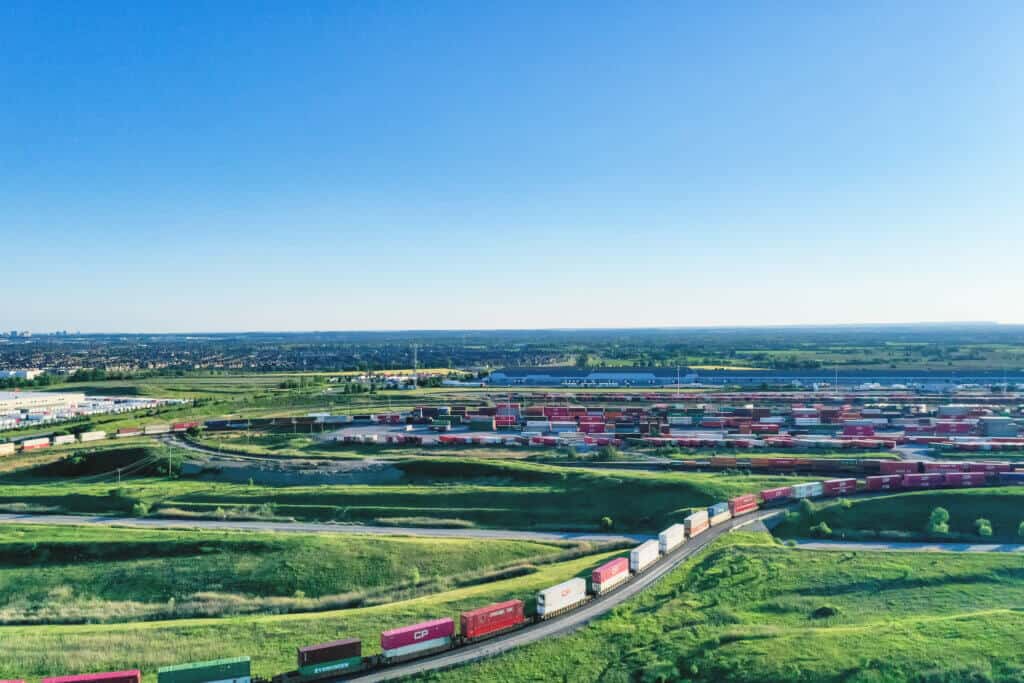
With increased pressure placed on supply chains over the past few years, transportation technology solutions for railroads, shippers, logistics providers, and railcar lessors present an attractive opportunity for supply chain innovation. On any given day, more than 40% of all goods in North America travel on a freight railroad. There is constant pressure to move those goods more efficiently utilizing a single, modernized multi-mode transportation management system (TMS) as part of a connected supply chain platform. These end-to-end supply chain management (SCM) platforms lower the barrier for shippers and logistics companies to work with freight railroads – which remain the most cost-efficient and environmentally friendly way to move goods.
Reliance on rail logistics is essential in many regions of the world. E2open is well-aware of this dependence, as our TMS manages over 80% of North American agriculture rail moves. In recent months, the US government has intervened to avoid potential rail strikes that could have added to existing supply chain shortages and chaos if 30% of the nation’s freight logistics capacity shut down.
Given the logistics conundrum with over-the-road providers, when should you evaluate rail shipping as an option, how complex is it to book rail shipments, and what else should you know
Rail has some clear advantages compared to over-the-road trucking, but companies should also be aware of potential limitations. Choosing rail transport where it can augment a shipping strategy can build needed flexibility. All sectors of the global supply chain are witnessing capacity constraints, labor shortages, and rate hikes across freight modes. Understanding when and how to optimize your carrier network and improve resiliency across your supply chain can lower costs and improve customer satisfaction.
Here are a few facts to help you learn why expanding the use of rail to move goods can help you succeed in an environment of constant change.
What Are You Shipping?
Rail is the mode of choice for bulk commodities, such as plastic pellets, lumber or minerals, chemicals, or other raw materials on their way to being refined or used in manufacturing. Fuels, such as gasoline, propane, or coal, are commonly shipped via rail in high volumes. For raw commodities, such as lumber, rail does not have the load size and weight limitations that road transport has, making it an obvious choice. But rail can be an option for more than just raw materials or volatile liquids.
When certain types of products don’t have an urgent timeline and the quantities are high, rail should be in the conversation. Parts and components for manufacturing, finished hard goods, or vehicles can also be excellent candidates for rail transport. Also, rail carriers have mature processes and infrastructure in place to manage hazardous materials movements. In contrast, truck and other modes can be riskier based on proximity to populations and auto traffic. Trucking is typically the stronger choice for temperature-controlled goods, but rail should be considered in other situations.
Security and theft of certain types of freight should be taken into account when making mode choices. Rail is recognized as the most secure mode, with fewer opportunities for theft, due to strong controls and procedures on routes, stops, and rail yards.
Geographic Considerations
Rail is best for long hauls on the same continent. The North American and European (EU) rail networks have strong geographic coverage. Still, rail can have limitations if your destination is not close to a major hub, typically around major metropolitan areas.
Time
If you’re on a tight deadline, and flexibility for origins and destinations is a requirement, over-the-road might be the better choice.
Costs
While costs are rising for all freight modes, recent data shows rail can be as little as one-third to one-fourth of the cost of over-the-road shipping1. For long-haul, bulk shipments, prices per ton-mile can be as low as four cents versus twelve cents for truck. This makes rail very competitive for region-to-region or cross-continent moves.
Visibility
Truck, ocean, air, and parcel modes have made great strides in recent years in improving the availability of track-and-trace data to shippers. Rail carriers are less equipped for this, and it can be more challenging to get . Carriers and technology vendors are actively working to improve this gap in concert with rail networks.
Environmental Impact
When considering weight and fuel costs, choosing rail will typically have a smaller carbon footprint than truck transport. Over long distances, rail is typically the most cost-effective, fuel-efficient way to get bulk goods of many types to their destination. For bulk shipments, rail can be three to four times more fuel efficient than truck2. It’s also important to note that electric engines are becoming more prevalent and will continue to lower the overall rail transport carbon footprint.
Intermodal Flexibility
Sometimes, the question isn’t when to use rail versus truck transport but how to use multiple modes in a complementary strategy. It’s often most effective to use rail for the longest leg and allow the ‘final mile’ to be handled by truck or another method.
Intermodal, in this case, rail and over-the-road trucks, can benefit an overall transport strategy. Due to obvious limitations. Rail has less access to many endpoints, and trucks are typically the final leg mode of choice for intra-continental transport.
Summary
We’ve exposed the benefits and disadvantages of rail shipping. There’s a lot more to consider and e2open’s rail logistics experts can help you determine whether you should dig deeper. Shippers and freight forwarders should consider rail when:
- You have higher volumes to move long distances
- Any time you are moving bulk commodities
- Delivery isn’t time sensitive
- Security is a consideration
An intermodal process would make sense, where rail and over-the-road can be used in combination
Knowing when to consider rail as part of a holistic transportation management system is important. E2open’s Transportation Management solution covers all modes, including rail. E2open simplifies and optimizes domestic and international logistics for shippers, freight forwarders, carriers, and logistics service providers (LSPs) by providing capabilities based on your specific needs.
Learn more about how e2open’s Transportation Management capabilities can help make your supply chain network more resilient.
References
- Research Gate: Cost Per Ton Mile by Mode of Transportation https://www.researchgate.net/figure/Cost-per-ton-mile-by-mode-of-transportation-30_fig12_332423194
- American Association of Railroads https://www.aar.org/sustainable-technology/





